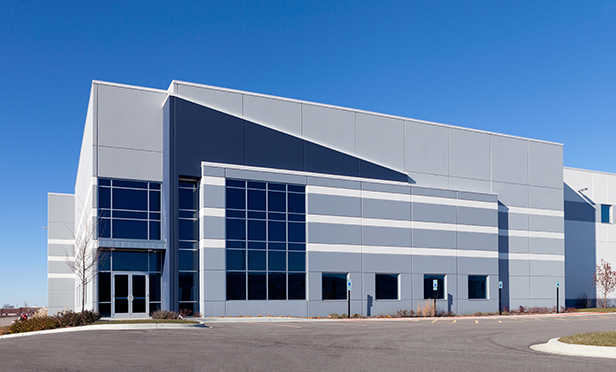As the construction industry recovers from the initial impact of the pandemic, project volume is trending upward. There is still a market for new construction, especially in the warehouse/logistics sector, as well as a demand for large-scale renovations as investors seek value-add or opportunistic adaptive reuse projects.
If you've set your sights on a newly constructed or recently renovated building, don't be fooled by the fresh exterior, updated finishes, and new systems. You may assume that new construction means reduced risk, and might even skip the Property Condition Assessment (PCA)—after all, what could go wrong on a brand-new building?
Recommended For You
Unfortunately, plenty of problems can arise with recent construction—especially now, when builders are challenged with material and labor shortages as well as COVID-related delays. From an investment standpoint, investors in new buildings don't anticipate significant Capital Expenditures (CapEx) early in the life of the building. A PCA can help you identify potential problems and address any deficiencies prior to acquisition. This added level of scrutiny can be the difference between a profitable investment and a loss.
Think of it this way: savvy buyers spend time to analyze the historic performance of a building and its systems before acquisition. With new construction, there is no history to analyze; you're essentially buying an untested machine. Therefore, acquisition of new construction, especially those that were "built to sell" require more due diligence, not less. Frequently, building system defects will take several years to surface and will not be apparent when the building is brand new. Your due diligence consultant will dig into construction documents: Were quality materials used? Were qualified subcontractors selected? What was the level of construction oversight? Was the design thoroughly detailed? In the absence of adequate historic data, you'll need a sophisticated PCA team who can inspect, document, and characterize the building for you.
Our PCA teams assess projects all over the world. Here are some of the problems we've noticed recently when assessing newly constructed or renovated buildings.
COST-CUTTING/INADEQUATE MATERIALS
In the rush to bring a project to market, builders may cut corners to save time or costs. In the case of material or supply shortage, alternate materials may be used in lieu of those specified by the plan. These shortcuts have a way of showing up several years later, resulting in increased operating budgets or premature CapEx events. Consider your MEP systems, for example. Normal expected useful life for many of these systems is 15 years or longer. However, if your builder selected to provide a heating unit which also handles domestic hot water production, to save building costs, that unit could require earlier replacement. The lifecycle cost of that system is now elevated, and your CapEx projections must reflect that. Cheaper systems may also be less efficient, resulting in increased Operational Expenditures (OpEx) and a lower Net Operating Income (NOI). While an increase in OpEx costs would be apparent in a building that has several years of seasoned financials, that data is not available for a new building. Every dollar saved on construction equates to more profit for the seller, and potentially more exposure for the buyer.
LACK OF QUALITY CONTROL
Recent construction may also be impacted by the shortage of qualified labor. Since the Great Recession, skilled construction workers have been in short supply. In the absence of adequate resources, builders may rely on less qualified labor or have fewer workers per project, resulting in poor workmanship and limited quality control. Our PCA teams routinely find evidence of inadequate QA/QC in new construction: problems as fundamental as windows installed upside down, or weather barriers installed backwards. Left unchecked, façade issues such as these affect the watertightness of the building envelope and allow moisture intrusion, potentially causing significant damage over time.
COMPLIANCE ISSUES
Even qualified builders have occasional compliance misses, simply because there are so many codes to adhere to when constructing a commercial building. Local building and fire codes, regional ordinances to address flood or seismic risk, federal guidelines for housing or government tenants—the list goes on and on. Non-compliance with these various codes can expose a property owner to life safety risk, financial and legal liability, loss of warranty coverage or insurance protections. We notice non-compliance most often in relation to accessibility laws. Beyond the Americans with Disabilities Act, there is the Fair Housing Amendments Act, Architectural Barriers Act, Section 504 of the Rehabilitation Act, along with state and local codes—each of these codes is applied differently depending on factors like the use of the building, whether the building was federally funded, whether its occupants receive federal services, etc. Furthermore, accessibility codes are extremely precise; minor deviations from a compliant plan can result in a non-compliant building. For these reasons, it is critical to have a qualified accessibility specialist assess your buildings for accessibility compliance.
COVID-RELATED CONCERNS
While we haven't seen significant changes to building design as a result of COVID-19, we do see adaptations made to address Tenant safety/confidence, CDC guidelines and reduce transmission risk. New buildings on the market today were almost certainly designed prior to the onset of the pandemic. Some of these buildings may incorporate measures like bi-polar ionization bars, improved air filtration, and UV lighting, but many will not. Buyers should consider whether the project can support modifications required for safe occupancy while the pandemic persists. These modifications may involve Indoor Air Quality (IAQ), space planning, flow of foot traffic, or touchless amenities.
With so much uncertainty in the market, and operating margins tighter than ever, proper due diligence is critical—even on newly constructed properties. A PCA by a qualified team of experts will identify and quantify building deficiencies before close, so you can make informed decisions and meet your investment objectives.
© 2025 ALM Global, LLC, All Rights Reserved. Request academic re-use from www.copyright.com. All other uses, submit a request to [email protected]. For more information visit Asset & Logo Licensing.









